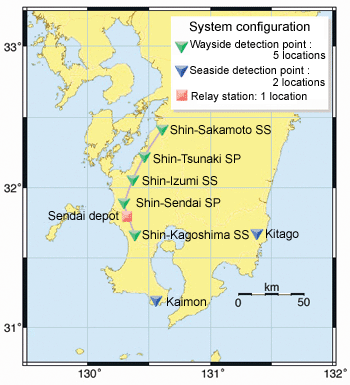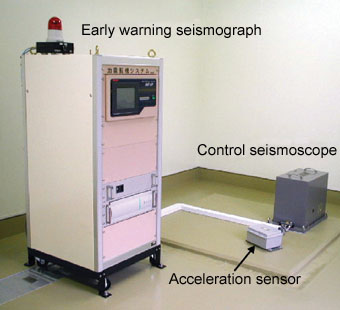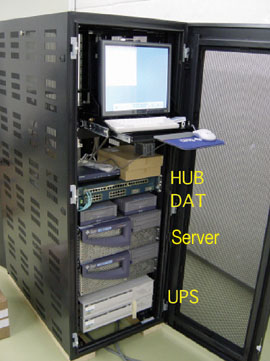| 3. Practical Use of an Early Warning Seismograph | ||||
|
For the practical use of an early earthquake warning system, the accuracy of earthquake element forecasts based on P waves (preliminary tremors) was verified. Countermeasures to prevent incorrect warnings due to a variety of noise types were also reviewed to determine the algorithm specifications for the prototype model of the early warning seismograph. In response to a request from the Japan Railway Construction, Transport and Technology Agency, an early earthquake warning system based on these specifications was put into practice on the Kyushu Shinkansen line between Shin-Yatsushiro and Kagoshima-chuo. This system consists of five wayside detection points and two seaside detection points (Fig.1), with each detection point combining the newly developed early warning seismograph and the conventional control seismoscope used for the Shinkansen (Fig.2). A relay system (Fig.3) was set up at the Sendai depot to centralize information from all detection points and to send necessary early warning information to the Hakata Central Direction. The system can also be applied to other sections of Shinkansen and conventional lines.
|


